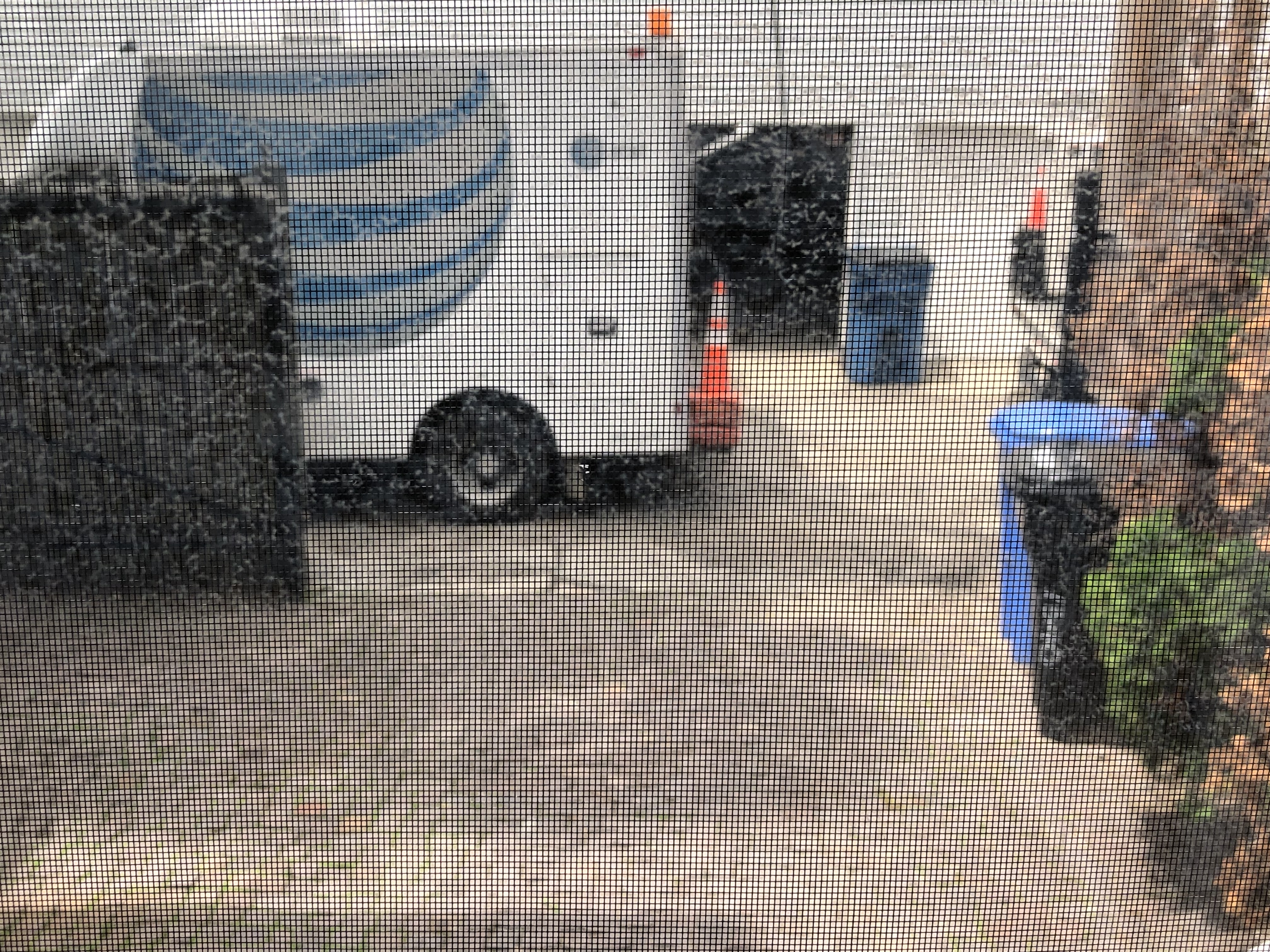 I dare you to find a big company that doesn’t say customer service, being customer-centric, world-class customer service, treating their customers well and so on and so forth ad nauseam is their highest priority.
I dare you to find a big company that doesn’t say customer service, being customer-centric, world-class customer service, treating their customers well and so on and so forth ad nauseam is their highest priority.
They all say it. And you know what? They all believe it!
But if it’s true—if customer service is the first, biggest, and most important thing that companies prioritize—why do so many of us have bad experiences so regularly?
Mostly because customer service is a lot easier to talk about than to do.
I mean, it only takes nine seconds to type “we take customer service very seriously!” but actually making it so takes consistent ongoing effort.
You’ve heard the horror stories about miserable customer service.
You may even have experienced it.
Scratch that—you definitely have.
And you might wonder, “How can a company THIS big, THIS reputable, THIS resourced screw up so badly?”
Oh, AT&T…Why Do You Hate Us All?
I had an experience just last week.
There are a bunch of new homes going up in my neighborhood.
It makes me kind of sad.
My house was built in 1891 and still has the original millwork and hardwood floors. It has a ton of character and is completely different from every other house.
But the developers are buying the land from our neighbors, knocking down their century-old homes, and building these $5MM monstrosities…that all look exactly the same.
Because of all the building going on, there are workers in and out of our alley (which we share with these McMansions) all day long—and I work from home.
For the most part, they don’t bother me and are super respectful if I need them to move so I can, you know, get out of my own driveway that they’re blocking.
But last week…last week was a doozy.
Because we also live four blocks from Wrigley Field, we sell our parking spot for every game.
And last Monday, the Cubs were in town and had an afternoon game.
I had sold the spot, which I didn’t think would be an ordeal, but it so happened that AT&T was out in front of our driveway, not one of the builders.
They were completely blocking our spot.

I went out there and explained that I needed to park there at noon and asked them if they could move. You know, a whopping two feet so we could get in the driveway.
They gave me this song and dance about how they were wired up and they couldn’t move.
So I called the 800 number on the back of their truck. And I got the same song and dance.
Then I asked to speak to a supervisor and made no progress.
Then I tweeted their customer service and got the, “DM us and we’re happy to help you” line.
That never went anywhere and, in the meantime, our parking customer showed up, not able to get in our driveway.
AT&T still wouldn’t move.
I ended up having to refund the customer and spent 30 minutes helping them find another parking spot at the last minute.
And then I called the police, who eventually made AT&T move.
What started out as a simple request, “Hey, could you move your truck at noon so we can park in our driveway?” ended up being an hours-long ordeal…all because their customer service, in person, on the phone, and online was awful.
I just want to park in my own freaking driveway!
Five Ways to Maintain Customer Service
But you’d never do that, right?
Your customers are perpetually happy, overwhelmed with the quality of your service in every interaction, and racing to tell all their friends, colleagues, and old high school buddies about how great you are.
Right??
Of course, that’s not the case.
Everyone makes mistakes, and sometimes we are all guilty of bad customer service.
Here five ways you can maintain the highest possible service over time.
Let’s do this!
Tie Customer Service to the Big Picture
All too often, how we actually serve our customers is on the priorities list after way, way too many other things.
So much is spent on getting new customers, that we forget how valuable keeping the ones we have is—and how far less expensive it is.
If a business is to grow, you can’t lose customers faster than you’re bringing in new ones.
It’ll put you on a treadmill you can’t get off of.
Keeping customers happy, and serving them to the best of your ability, should be at the very top of your list.
Have Boundaries
This one may seem a bit counterintuitive.
Boundaries, in this case, are the service standards you agree to—and maintain.
If your offices are closed in the evenings and on weekends, you shouldn’t answer emails or phone calls outside of those times.
If you agree to a certain number of deliverables, provide that number and not more.
Or if you have a certain amount of time earmarked for meetings and direct communication, that’s how long you should spend on it.
This adds to customer service in three ways:
- It means there is clarity about what you are doing when you’re doing it, and why. Everyone likes clarity.
- It requires your customers to respect your time and boundaries (and it’s MUCH easier to be nice to someone who respects your time!).
- And it preserves the energy and bandwidth of your team, so they can devote their full attention to delivering great service.
Be Consistent In Your Communication
The communications industry, like most, has its own vocabulary.
And companies within this industry have their own terms and definitions for different concepts.
Organizations also have their own ways of dealing with questions, concerns, collaboration, and feedback.
Can you think of anything more irritating than not knowing how to get support for an issue you’re having?
It’s infuriating. And that kind of irritation sticks around. And gets talked about.
A lot.
Often, our customers aren’t operating at our level of industry jargon.
(Nor should they—it’s nuanced and they have other priorities.)
But that means it’s on you as the service provider to make sure you’re clear and consistent so they know what to expect.
The Curse of Knowledge
We work with an organization that provides very specific marketing services.
We know what they do—and they’re very, very good at what they do, but they have a hard time talking about what they do that makes sense to the general business audience.
We’ve worked tirelessly to message them appropriately, but sometimes their own vocabulary gets in the way.
Earlier this year, they were almost to the point of getting a signature for work with a Fortune 10 company.
They sent their agreement and scope of work and they haven’t heard from them again. It’s now been three months and…crickets.
As we were dissecting what could have happened, I asked to see what they sent them.
The agreement was fine—and pretty standard.
But the scope of work was so convoluted and full of jargon, not even I knew what they were going to do for the company.
I read it three times to try to figure out what the work product and deliverables would be, but could not make sense of it.
And, if I couldn’t do it in three tries, there is no way the prospect would.
One of the best things to remember is this: you have the curse of knowledge.
That means, you are so close to what you do that you forget not everyone has the same level of knowledge or any level of knowledge.
I always like to use the grandmother test. If I can explain it to my grandmother and she’ll understand it, I can send it to the customer or prospect.
It’s a good rule of thumb.
Get Your Team Involved
Making sure your team understands everything you’re doing to make customer service a priority is critical.
If you have team members, especially customer-facing ones, who don’t understand the boundaries, the communications standards, and the ultimate goal of the service you provide, they’re not going to do a good job of keeping customers happy…and it won’t be their fault!
Team members who are confused about what to do in a given situation, have received mixed messages, or left to manage difficult situations without all of the information or resources they need, can’t provide the level of service you expect.
Laura Petrolino hit the nail on the head when she talked about the very, very friendly telecom support people she connected with, who were totally unable to answer her questions or help her.
(Notice a theme with the telecom companies?)
It’s so frustrating to have an experience like that as a customer.
And you know what? It sucks for the team members, too.
Do regular trainings with your team on how they should serve your customers, and more importantly, ask your team what support they need to do the best job possible.
If they’re front line, they know better than you do what the recurring issues are, and how to provide delight instead of just good service.
Be Proactive In Reaching Out
If you’re doing everything I’ve talked about so far, then you are well, well ahead of the pack when it comes to making your customer service top-notch.
But if that’s not you, let me pose a (rhetorical) question: what’s one of the biggest customer service complaints people have?
Lack of personal attention.
That’s something that can be fixed.
Just like we recommend executives leave their desks and walk around the office or the manufacturing floor, the same goes for reaching out to customers.
It doesn’t have to be every customer and it doesn’t have to be all the time, but as Tony Hsieh talked about in Delivering Happiness, the leader reaching out to a handful of customers every month is going to bump the personal attention level up about 10 notches…every time.
Every week, you or your executives should set aside some time to sit in on a meeting (or watch a recording), check in with the front-line team, and contact customers directly.
That personal touch keeps everyone in the loop about what’s working, what isn’t, and how your work is perceived.
Now It’s Your Turn…
So there you have it.
Five ways to add a little magic to your customer service.
Sadly, none of them are actually magic, in the literal sense of the word, but when you execute each of them, your customers are happy, it feels a bit magical.
If you’ve had an amazing experience with a company, let them know!
It’s always good to get some positive feedback.
And let us know, too. We love to hear the good, the bad, and the ugly…and may even feature your story.
The comments below or the discussions in the Spin Sucks community are yours…
Image by Wokandapix from Pixabay
P.S. I have no idea what the rock image has to do with customer service, but when I searched that term in Pixabay, it came up. And I fell in love. So there you go.